
Erg Chigaga
Morocco's Largest Dune Field
Sahara DreamsDesert Trips
I had gone into the desert with Ibrahim, my inn-keeper,
in his 4×4.
We had driven for about 60 kilometers to the west of
M'Hamid.
Erg Chigaga
is Morocco's largest dune field or
erg,
about 25×15 kilometers in size.
An area is considered to be an erg or dune sea
if it has at least 125 square kilometers of area
with sand covering more than 20% of the surface.
Earth has ergs as do Venus, Mars, and Saturn's moon Titan.
Chigaga is about 350 km2 in area
and almost entirely sand-covered.
Much of the Moroccan desert is stony.
Erg Chigaga and Erg Chebbi,
about 250 kilometers to the northeast,
are the two areas of pure sand desert in Morocco.
Bled is flat open land, unpopulated,
likely desert but not necessarily with large areas of sand.
Erg Chigaga is the dotted yellow area marked "Dunes"
in this section of a map.
The blue-grey dotted area is stony desert or bled.
The white area at upper right with the red "road"
marked across it is really more stony desert crossed
by a vague track passable by off-road vehicles only.
It's a 1953 map and the desert has expanded.
M'Hamid is off the map, east of the red
91.
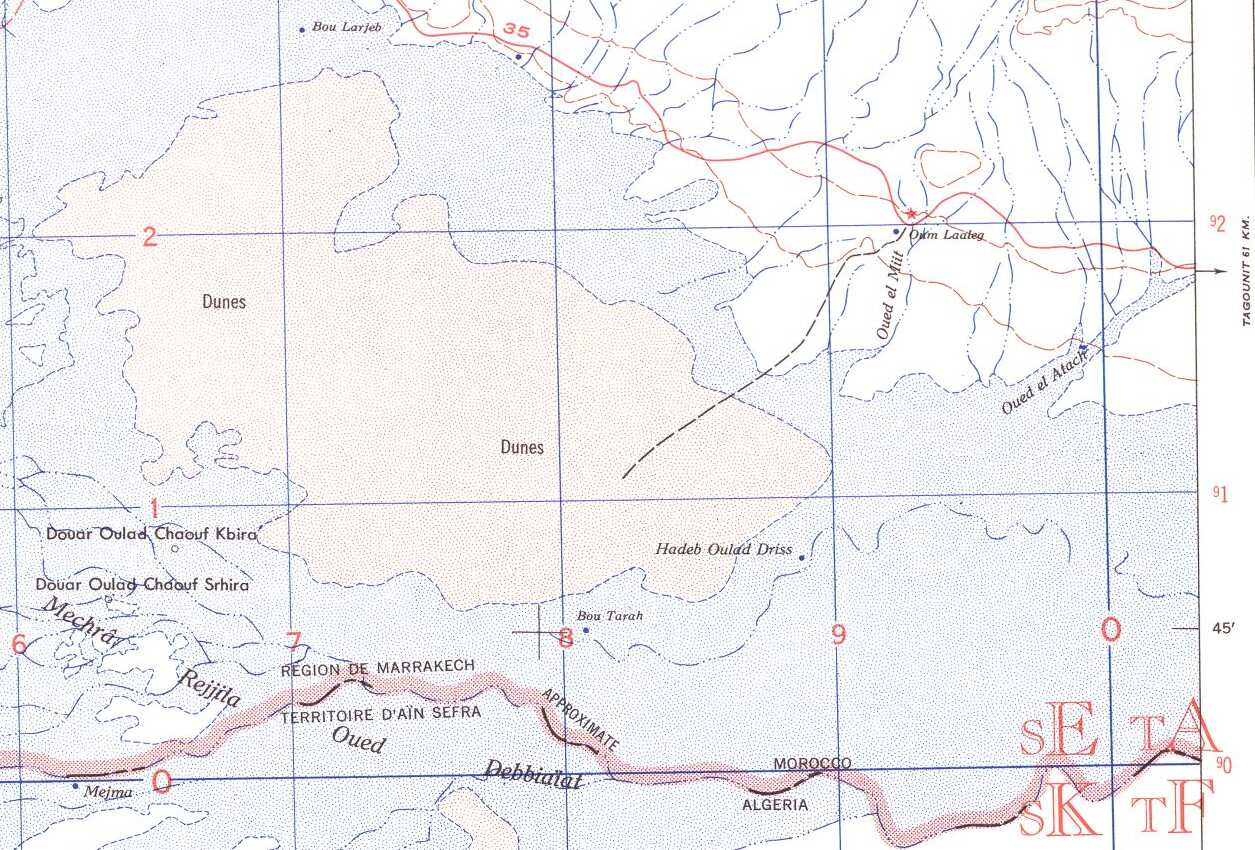
Portion of 1953 U.S. Army 1:250,000 map NH29-12 from the Perry-Castañeda Library Map Collection at the University of Texas at Austin. The black grid is 10×10 km squares.
Erg and bled are among the many Arabic words Frank Herbert used, and explained, in Dune and the following series of novels.
Just over a decade before 9/11, the U.S. led the 1990–1991 Gulf War in response to Iraq's invasion of Kuwait. It was the first war with live television footage of missiles striking targets. Then after 9/11 the U.S. was in what threatened to be a Forever War that lasted from September 2001 through August 2021. The Arabic term jihad was used both casually and with explanations in the news coverage.
However, if you had read Dune during your last year in high school, as I had, you already knew that word and had also been exposed to more Arabic including fedayeen, fiqh, hajj, i'jāz, kitab, la, mahdi, qanat, sayyadina, sharia, souq, and wadi. (along with the Turkish portikal and kanlı, the Persian Padisah used by the Ottoman Turks, Hebrew Kwisatz Haderach, and the possibly Persian-based Sardaukar)
Here are two pages from the 1981 paperback edition
I bought to replace my original,
the cover price on this one was US$ 2.95.
Erg = an extensive dune area, a sea of sand.
Bled = flat, open desert.
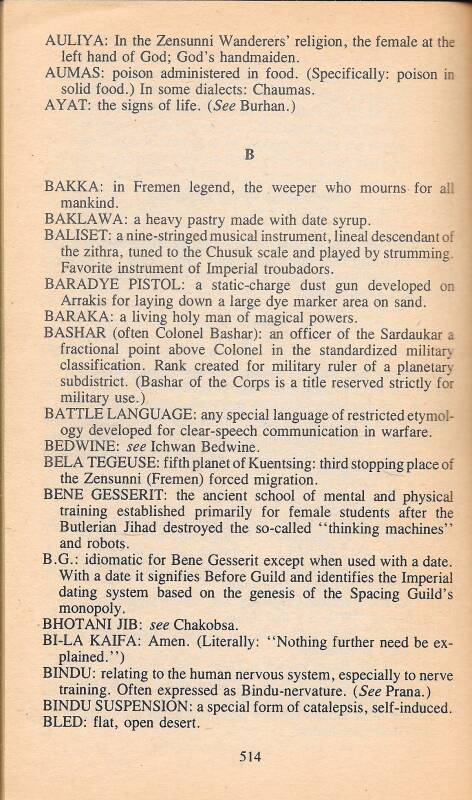
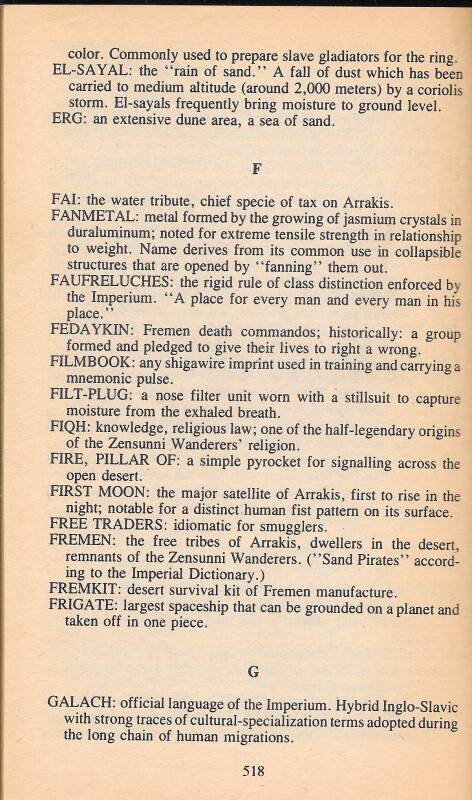
Erg Chigaga
And here I am at Erg Chigaga!
There's one of the poisonous Calotropis procera plants. Their milky sap is toxic and corrosive. Don't touch it. Especially don't touch it and then touch around your eyes.
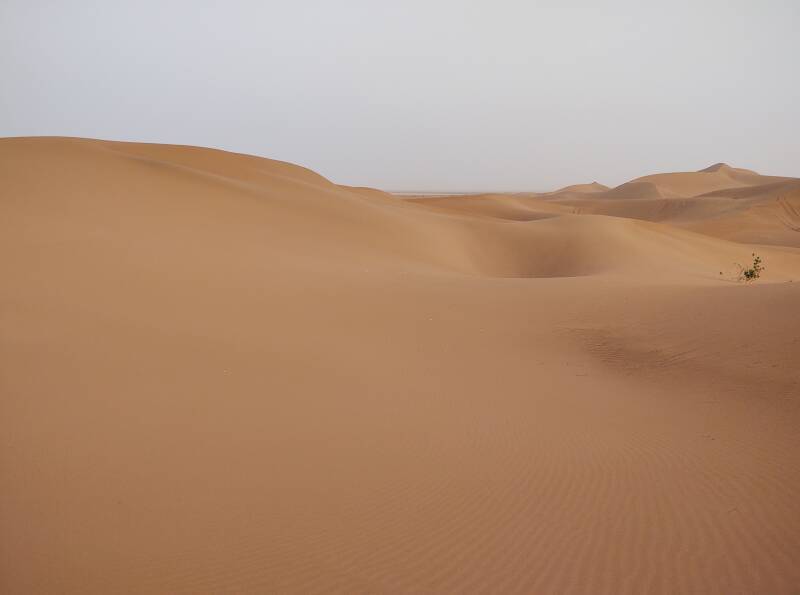
The dune field of Erg Chigaga averages about 50 meters above the surrounding stony desert. The tallest dunes are up to 150 meters tall.

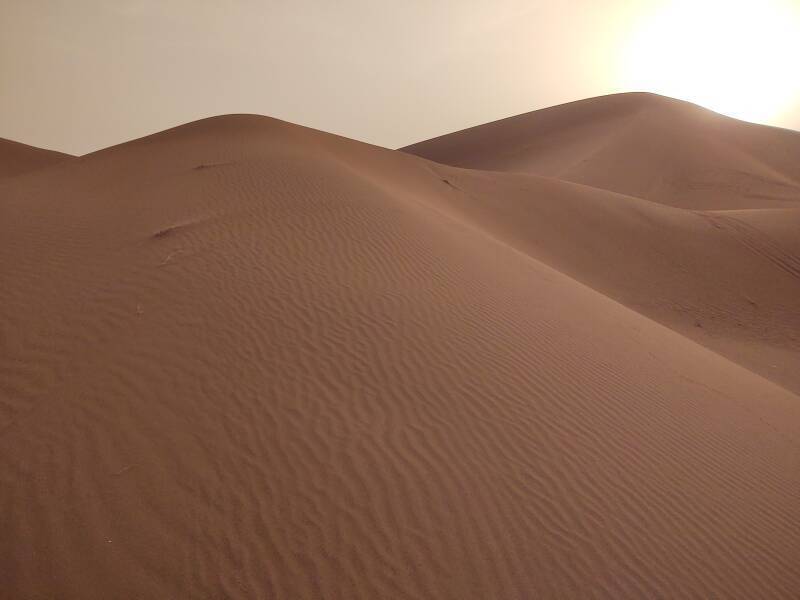
The wind constantly resculpts the dunes and smooths away footprints and tire tracks.
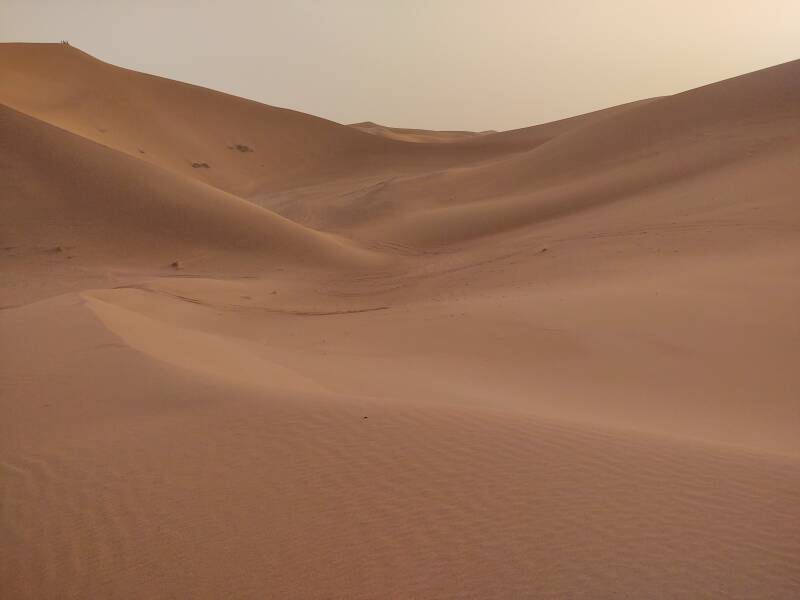
The sky was hazy, with a lot of very fine dust kept aloft by the winds over the past week.
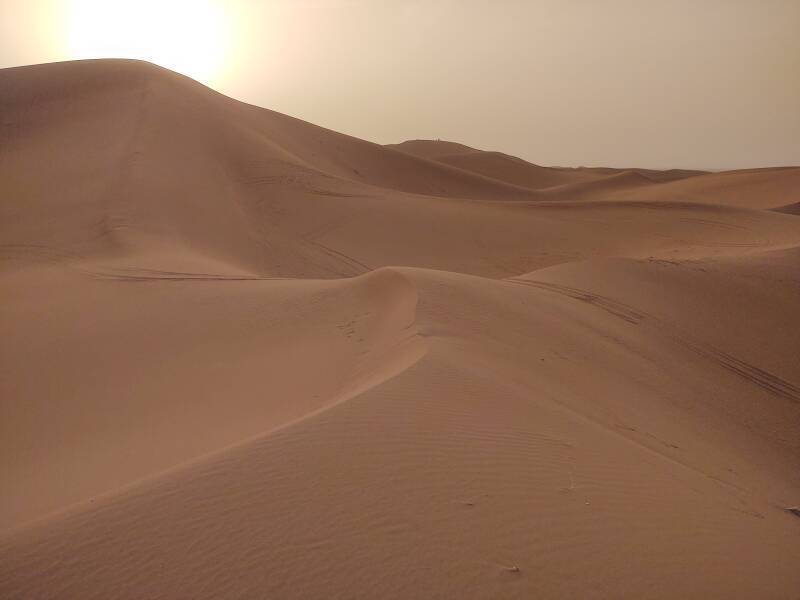
Looking north I could see a couple of camps along the edge of the erg. The open stony desert bled beyond supports some acacia trees.
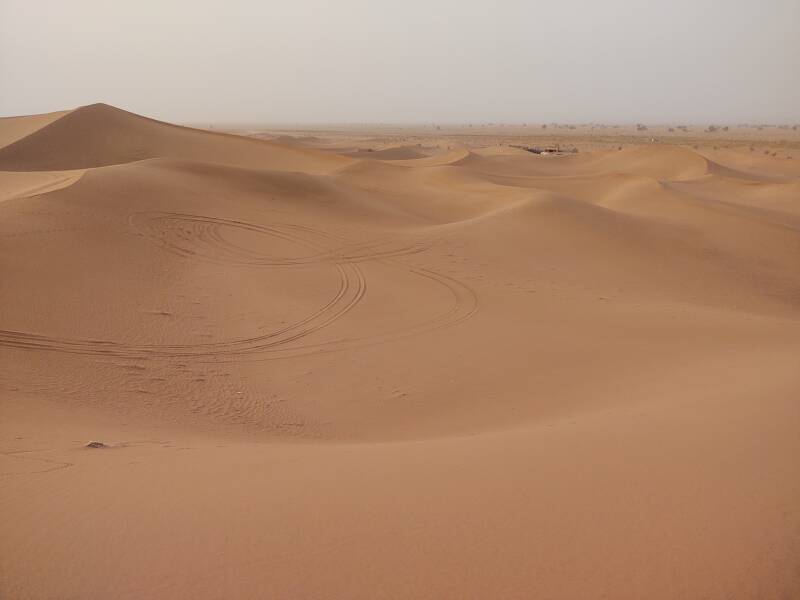
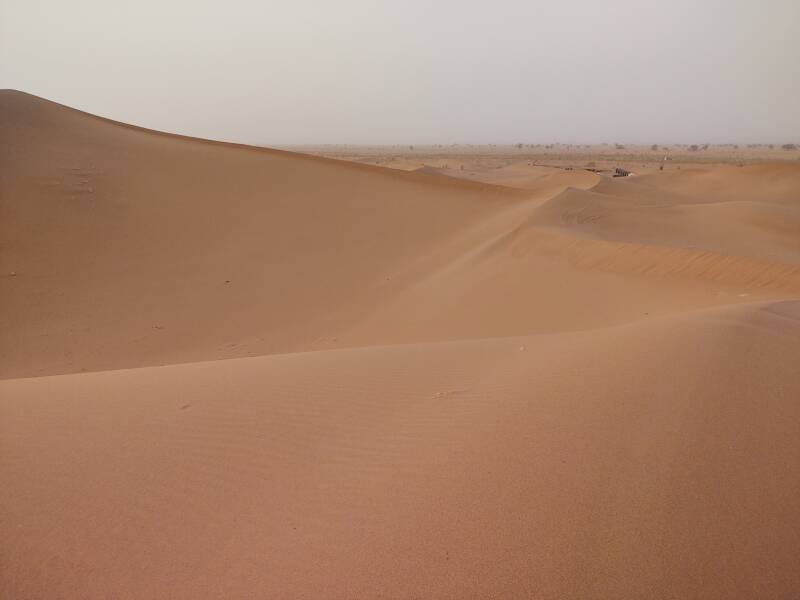
The wind forms sharp edges on the dunes.
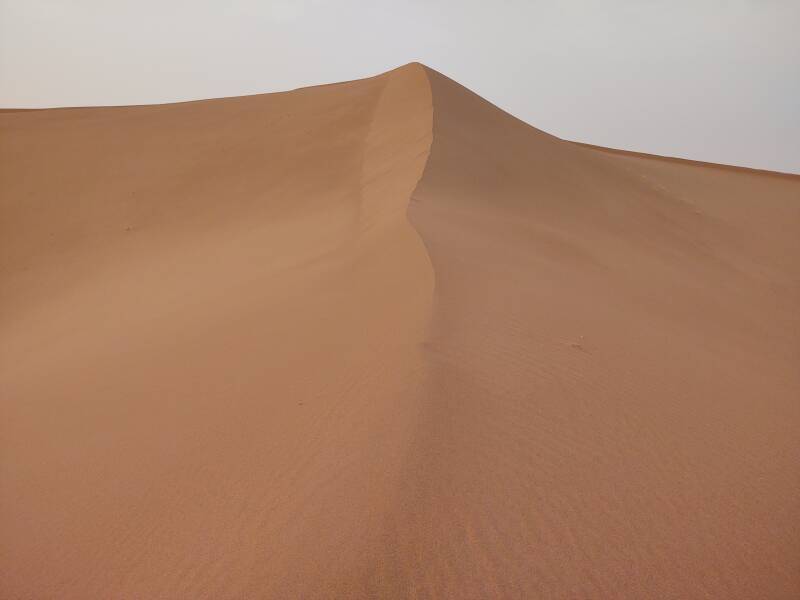
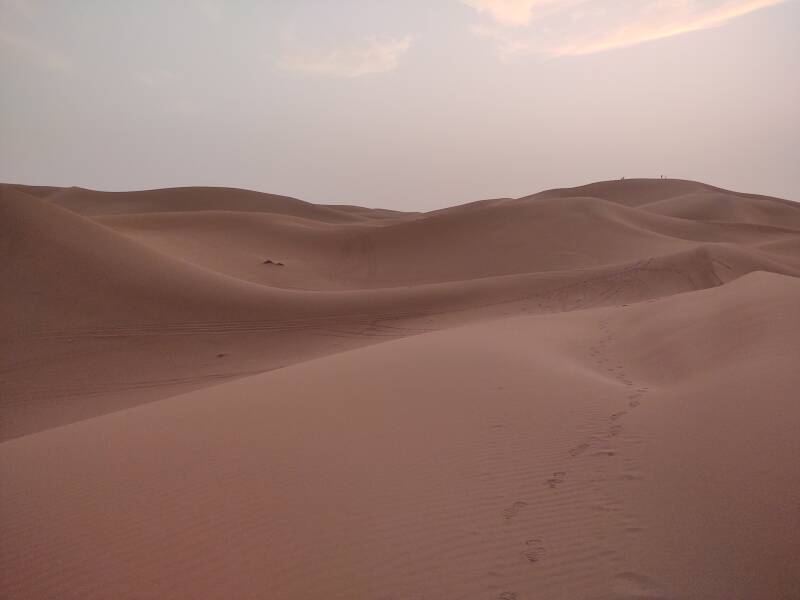
Two camps are at the edge of the erg between arms of low dunes reaching toward the stony desert.
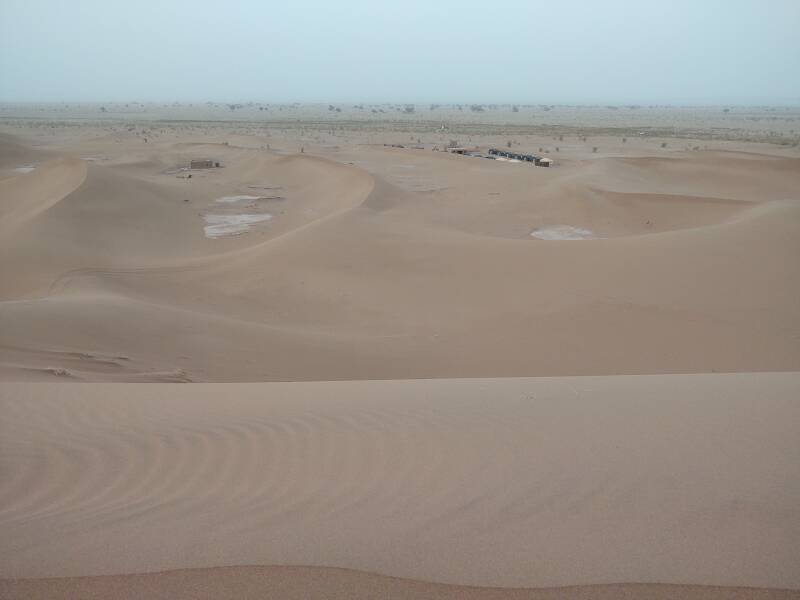
The sun set beyond the dunes.

It was time for me to return to camp.

The Moon, Jupiter, the Dust, and the Camp
This was the night of 4–5 October 2022. The Moon was 62% full, it was six nights before full, and so the Moon was visible through the late afternoon into the middle of the night.
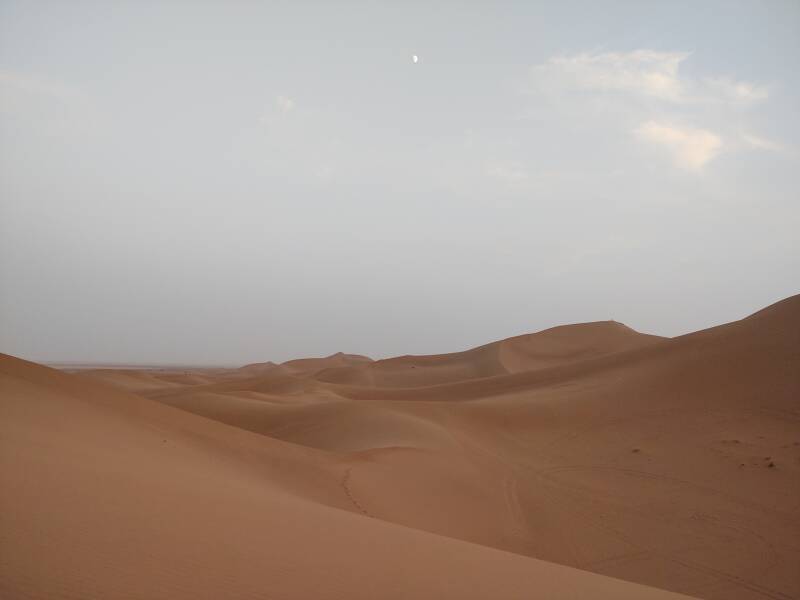
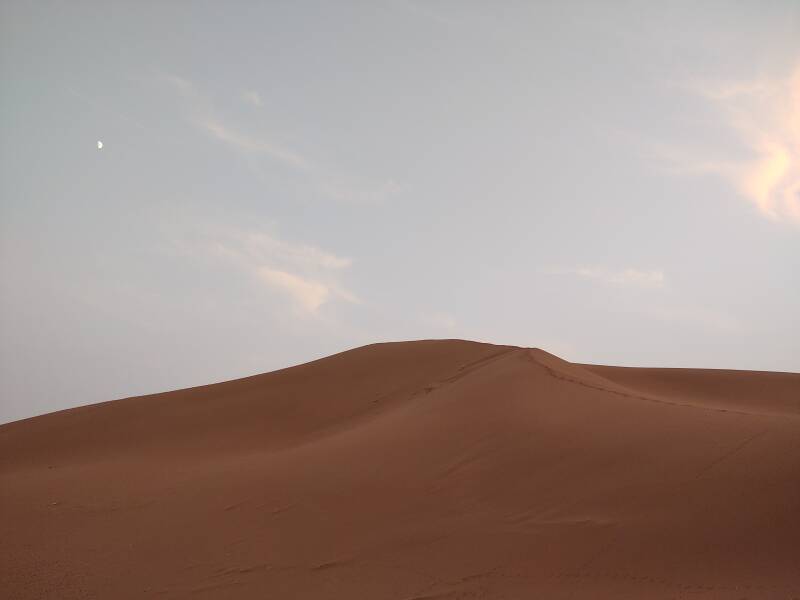
I returned to the camp area. There were two adobe buildings, one with a dining area and the other with toilets and sinks. The water had to be brought in by trucks, and the septic waste carried away by trucks. Solar panels charged batteries for lighting.
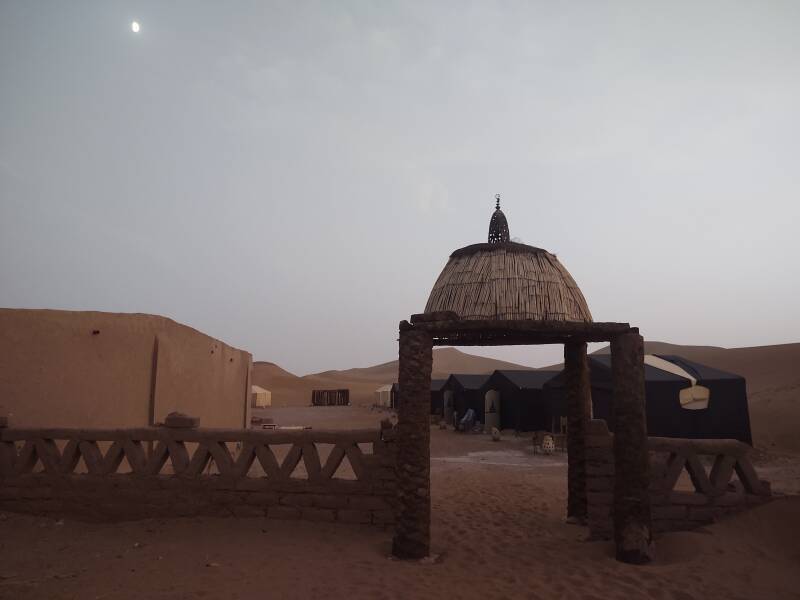
Mid-October was not the high season, there were just two other people staying at the camp. Ten of the dozen tents sat empty and a large area for lounging and conversation was idle.
Dinner was fantastic, of course.

Jupiter, visible through the yellow haze at left below, had been at opposition on 26 September, just a week before. Jupiter is at opposition, opposite the Sun as seen from Earth, roughly every 13 months.
However, this opposition happened close in time to Jupiter's perihelion, it's closest approach to the Sun, the following January. This meant that Jupiter was relatively close to the earth. It was still 591 million kilometers away, and with the orbits of both Jupiter and Earth nearly circular, the closest approach distance doesn't vary that much. But still, this was Jupiter's closest approach to Earch since October 1963, 59 years before. And, it wouldn't be this close again until 2129, another 107 years.
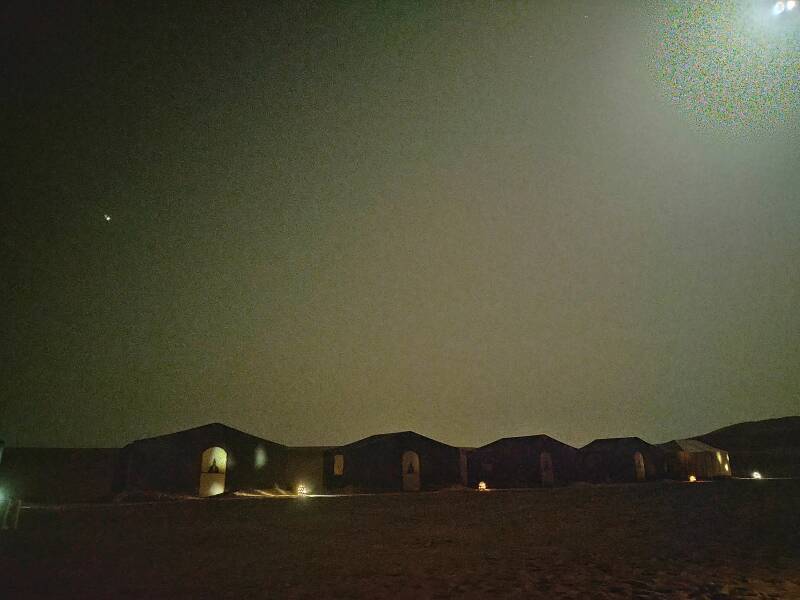
You can see fantastic night skies in the desert. I certainly did on all my nights at M'Hamid except for one. But the sky had a lot of yellow dust haze that one night in M'Hamid and this night at Erg Chigaga. Above is the view across the camp from my tent. Small lanterns provided light if you needed to make your way to the toilet and back. The Moon illuminated the yellow haze in the sky. Jupiter shines through the haze at left, but very few stars were visible.
My tent was very nice, it had two beds like this and even a coat rack! The blanket was useful, it gets quite cool at night in mid-October. Notice my water supply. Take plenty!

Sunrise in the Desert
I did some more exploring after sunrise, before our host made breakfast.
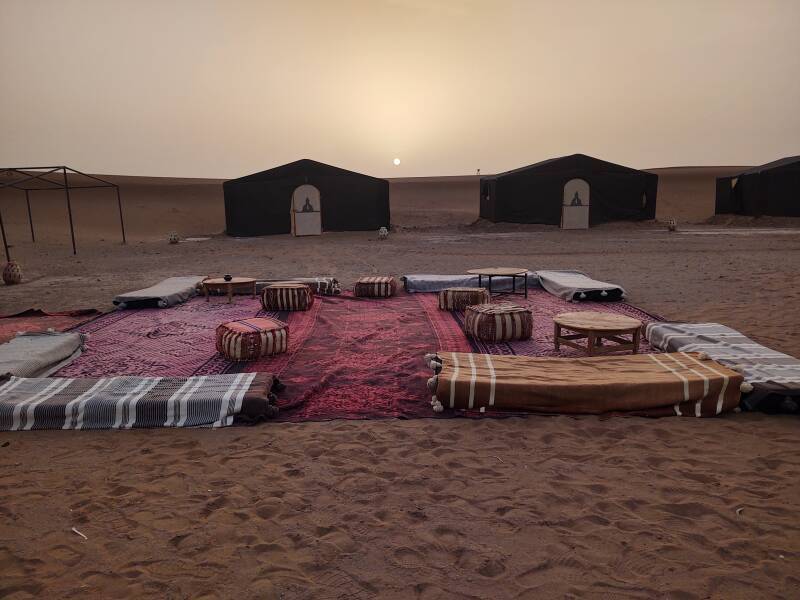
I wasn't the first person to venture out that morning.
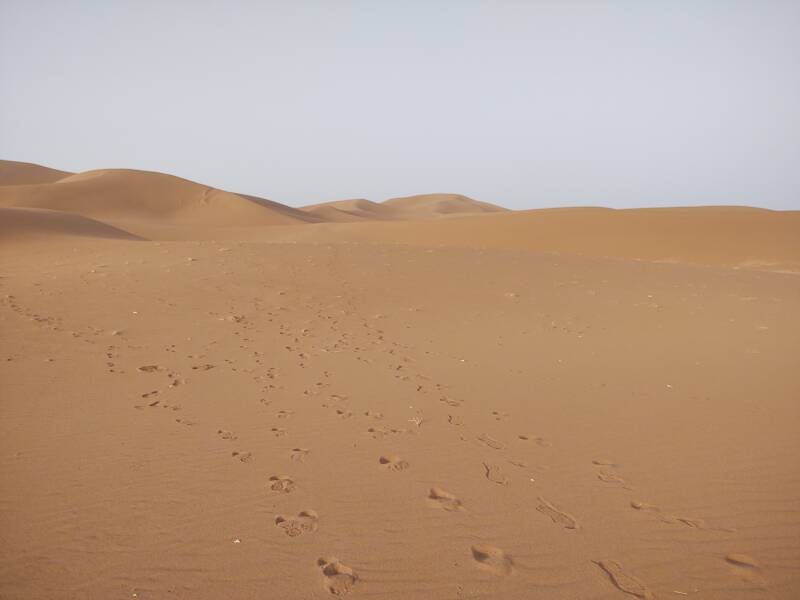
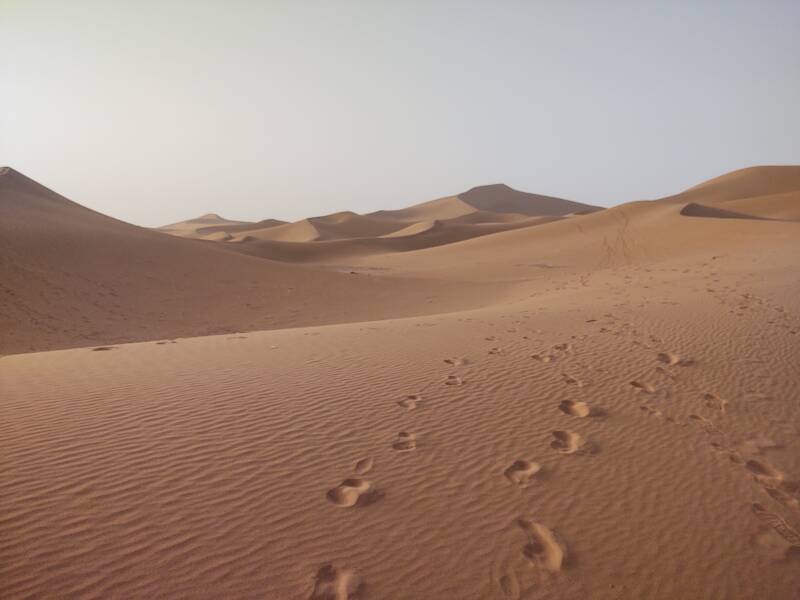

Returning to M'Hamid
After breakfast it was time to drive back to M'Hamid.
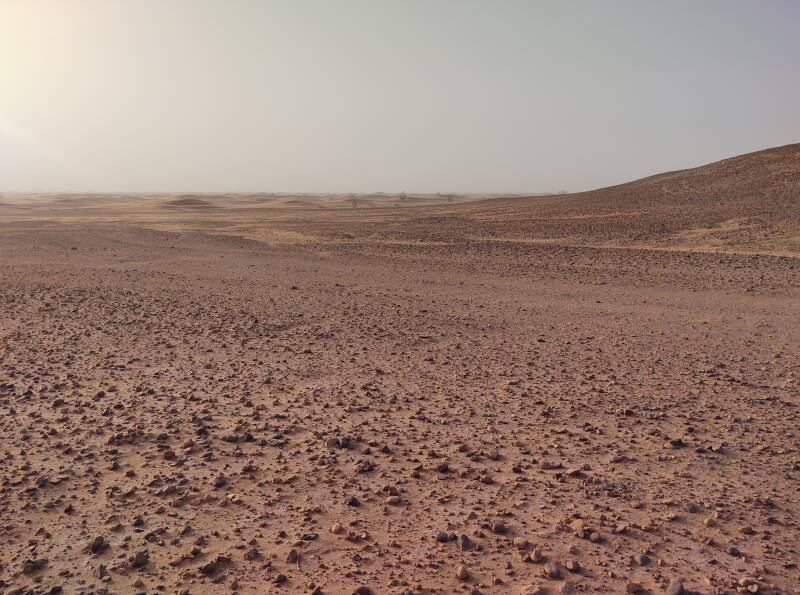
We passed some smaller dune fields on the way back.
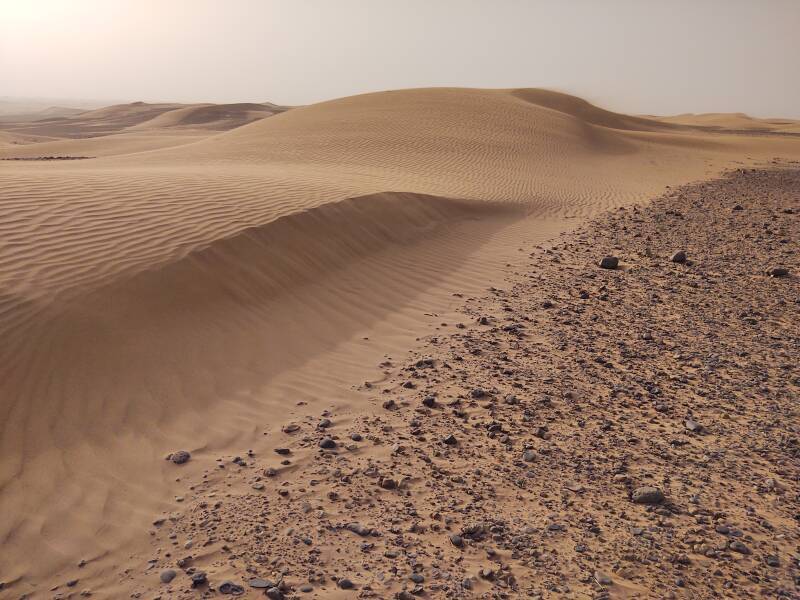
You can see the wind is blowing from left to right, moving sand off the edges of the small dunes.
Ibrahim is wearing a djellaba, the standard Berber garb.
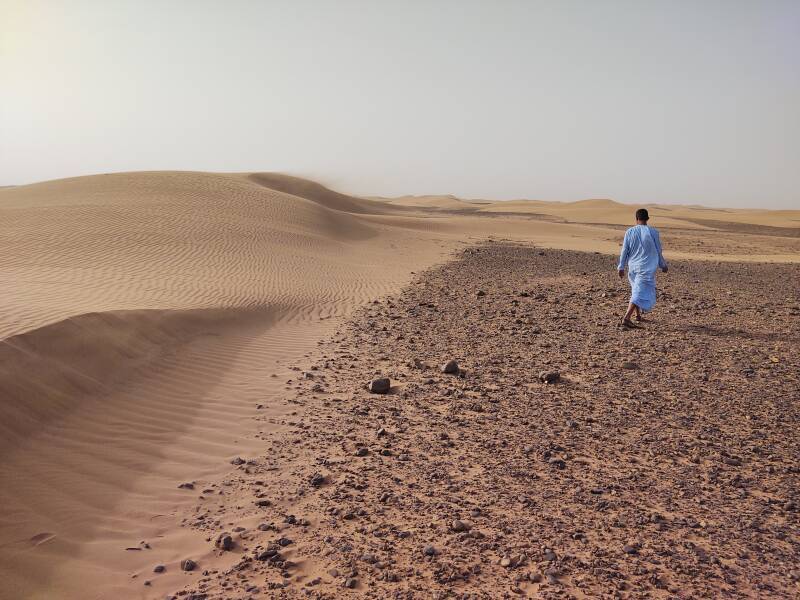
The footprints will soon be gone and the ripples extended over where they once were.

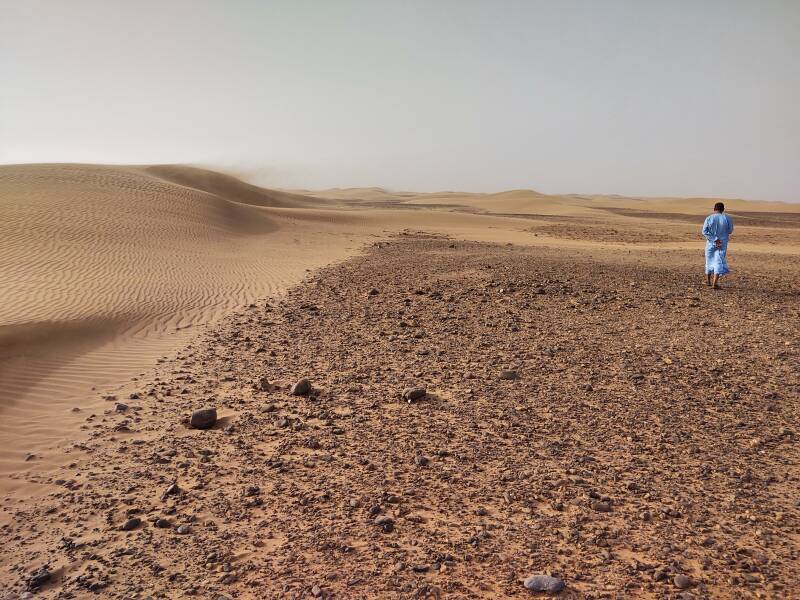
The wind increased and the dust thickened as we drove east to M'Hamid.
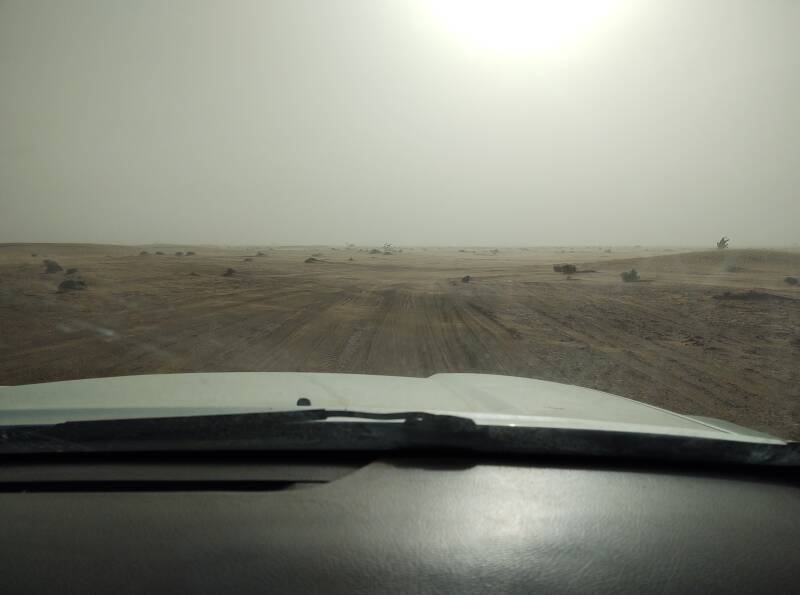
The Long Return
The last page shows my return through the mountains to Marrakech by bus, a few nights there, an overnight train to Tangier and two nights there, then back to Casablanca to fly back to Chicago.

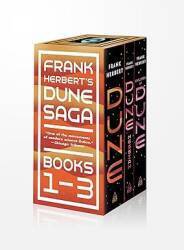
Earth: 0.0167086
Jupiter: 0.0489